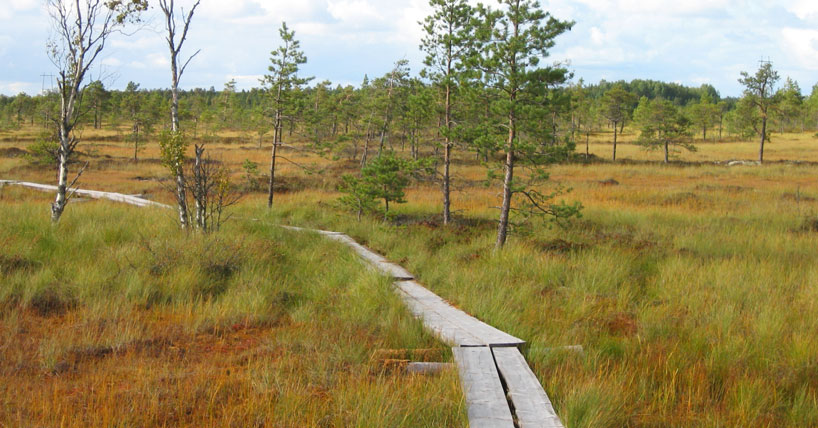Restoring eroded peatlands
Restoring eroded peatlands reduces downstream flood risk
Published on: 24 July 2024
Scientists have found that the restoration of upland peatlands is a highly effective strategy for reducing downstream flooding.
Scientists from The University of Manchester, The University of Aberdeen and Newcastle University built the model was using data from a field experiment conducted with Moors for the Future Partnership looking at the impact of restoration on runoff on Kinder Scout in the south Pennines. In 2021, the Kinder Scout National Nature reserve managed by National Trust was extended – partly in recognition of the importance of these sites – and the new findings further emphasise the value of controlled long-term landscape experiments in understanding the impact of peatland restoration work.
Using new methods of modelling flood levels in the town of Glossop, which lies below the moorland peaks of Bleaklow and Kinder Scout in the Peak District, the team have demonstrated that fully restoring 41% of the upstream catchment via re-vegetation, gully blocking and sphagnum planting makes it more than 90% likely that the magnitude of a 100-year flood event would be reduced by more than 20%. If only 20% of the catchment is restored, they found that this would be 66% likely to reduce it by 10%.
Re-vegetating peatlands reduces downstream runoff because increased roughness of the vegetated surface slows the flow of water across the peatland. During a storm, a delay of some of this runoff means that the river peaks later and lower than it would have in an unrestored situation.
The peatlands of northern England are unusual as they have a limited presence of sphagnum moss, which is a mainstay of most peatland vegetation worldwide - but atmospheric pollution from the chimneys of northern England during the Industrial Revolution led to widespread loss of this moss cover. The experts have demonstrated that replanting this moss is a highly effective mechanism for slowing the flow of water across the peatland surface. Planting sphagnum into restored peatlands is a win-win strategy, as it also enhances carbon storage and biodiversity.

Flood protection and ecosystems benefits
“This study is conducted using the latest hydrological modelling science, but what really sets it apart is the quality of the observations behind it - the empirical data from Kinder Scout has been a real privilege to work with,” said The University of Aberdeen’s Salim Goudarzi, lead author of the study. “In many ways our study is as concrete of a proof-of-concept as possible. We hope our modelling study will underpin expansion of ongoing peatlands restoration across northern England which will deliver a wide range of ecosystem benefits alongside flood protection.”
“Combining the modelling expertise of the Newcastle team with the data from Kinder Scout has allowed us to show that peatland restoration is a viable flood mitigation approach,” said The University of Manchester’s Martin Evans, the Principal Investigator on the project. “Peatland restoration already delivers great biodiversity and carbon storage benefits and today’s results clearly show that planting sphagnum on the moors to replace the mosses that were lost through industrial pollution in the past is a no-regrets restoration strategy that delivers a wide range of benefits.”
“We’ve been working to restore the moorlands of the Peak District and South Pennines for the last 21 years,” said Tom Spencer, Science & Monitoring Officer at Moors for the Future Partnership. “This restoration work is based on scientific evidence and the research with The University of Manchester and the University of Newcastle shows the natural flood management benefits of planting sphagnum and the opportunities for upscaling to extend these benefits, especially considering the increased risk of extreme weather events.”
"This study is exciting because it shows that small changes over large areas really can stack up to make a big difference,” said Newcastle University’s Dave Milledge, who also worked on the study. “It also demonstrates that it is possible to make changes that are good for carbon storage, for ecosystems and for people downstream, as well as showing that changes in the hills can make a difference further downstream. But we need to remember that different places and different interventions will behave differently - not all peatland restoration will deliver flood risk benefit, nor should it be expected to."
“These findings are very promising in terms of the potential flood risk reductions that can be achieved by using upstream Natural Flood Management interventions in the peatland headwaters of the catchment,” said David Brown from the Environment Agency. “Utilising detailed plot-scale observations and upscaling using the modelling approach has demonstrated what could be possible - the trick now is to continue with the upland rest oration.”
Press release with thanks from the University of Manchester.



